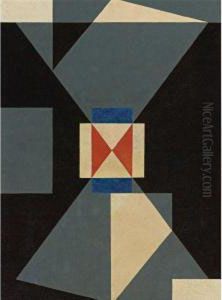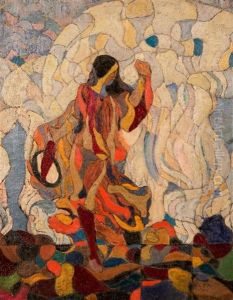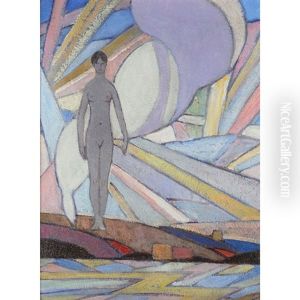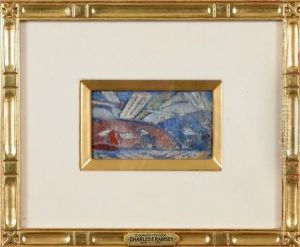Charles Frederic Ramsey Paintings
Charles Frederic Ramsey was an American artist and educator, born in 1875 in Moorhead, Minnesota, and passed away in 1951. Ramsey's career spanned several decades during which he made significant contributions to the American art scene, both through his own creative work and his efforts in art education. He was particularly known for his work in watercolor and his role in the arts and crafts movement in the United States.
Ramsey's early life was marked by a passion for the arts, leading him to pursue formal education in the field. He studied at the Pennsylvania Academy of the Fine Arts, where he was influenced by Thomas Anshutz, a prominent figure in American art education. Ramsey's style was also shaped by his studies in Europe, where he was exposed to a variety of art movements and techniques. His work often reflected an interest in capturing the everyday life of Americans, with a particular focus on landscapes and urban scenes.
Throughout his career, Ramsey was deeply involved in art education. He co-founded the Minneapolis School of Art (now known as the Minneapolis College of Art and Design) with fellow artist Ernest Batchelder. The school became a significant institution for art education in the Midwest, promoting the values of the arts and crafts movement, which emphasized the importance of craftsmanship and design. Ramsey's dedication to education was evident in his teaching philosophy, which encouraged creativity and individual expression among his students.
Ramsey's contributions to art were not limited to education. He was an active member of the American Watercolor Society and participated in numerous exhibitions throughout his life. His work is characterized by a gentle realism, with a subtle use of color and a keen eye for detail. Although perhaps not as widely recognized as some of his contemporaries, Ramsey's art and educational efforts had a lasting impact on the American art scene, particularly in the Midwest.
Charles Frederic Ramsey's legacy is preserved through his artworks, which are held in various collections, and the institutions he helped to shape. His commitment to the arts and crafts movement and his belief in the power of art education continue to inspire artists and educators today.




